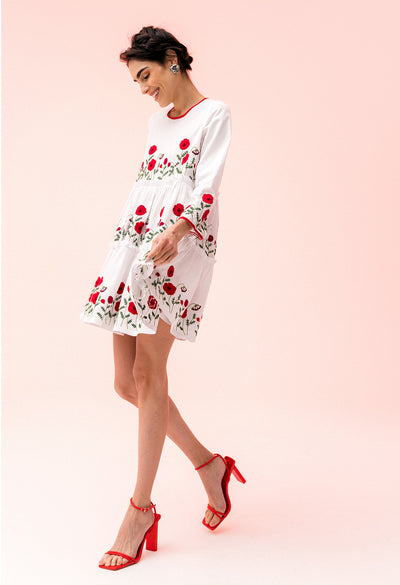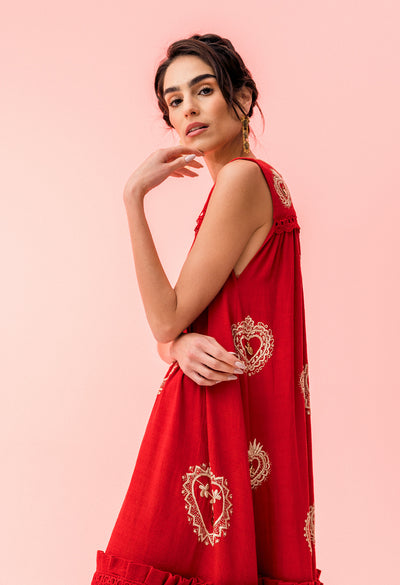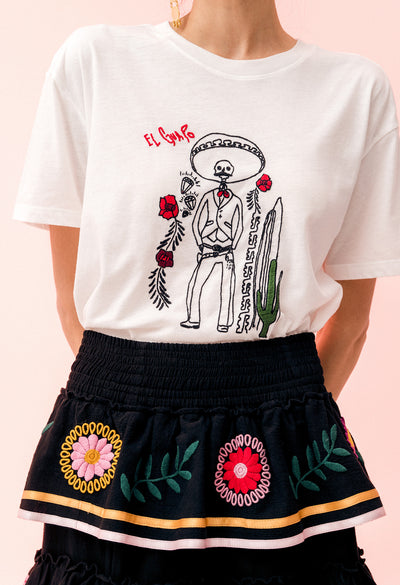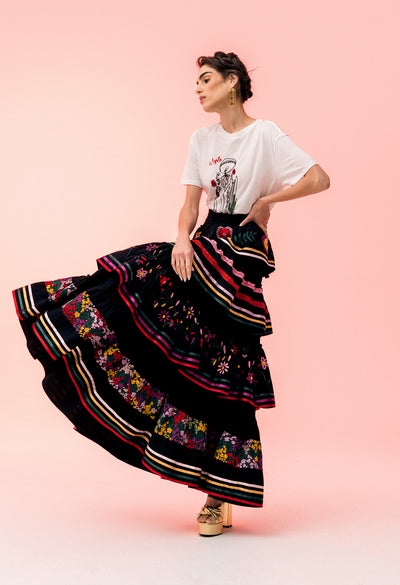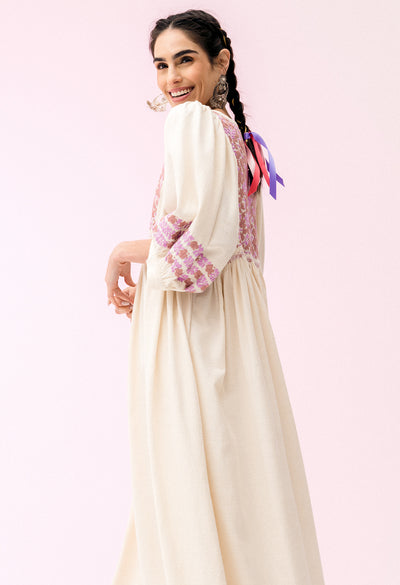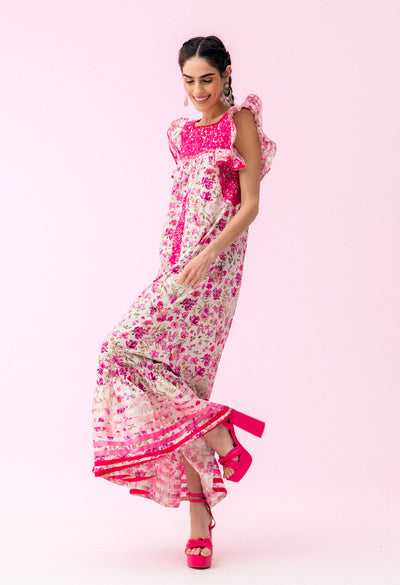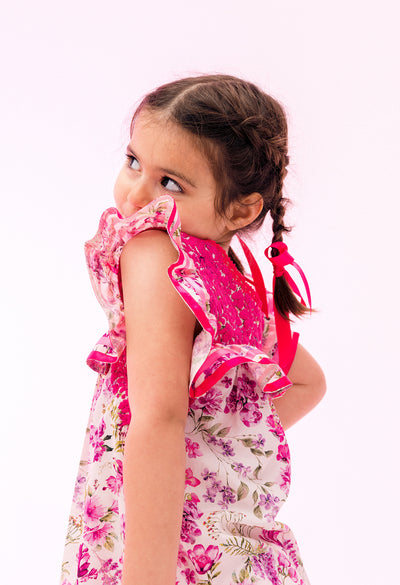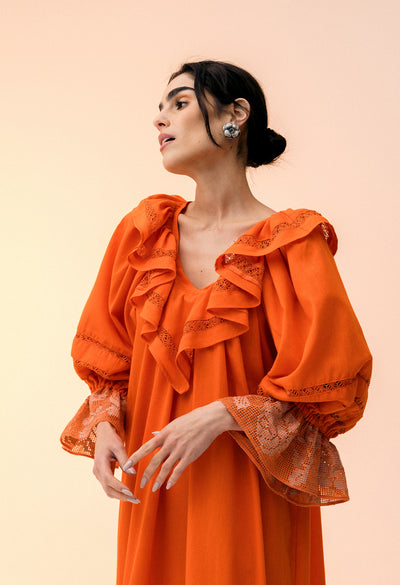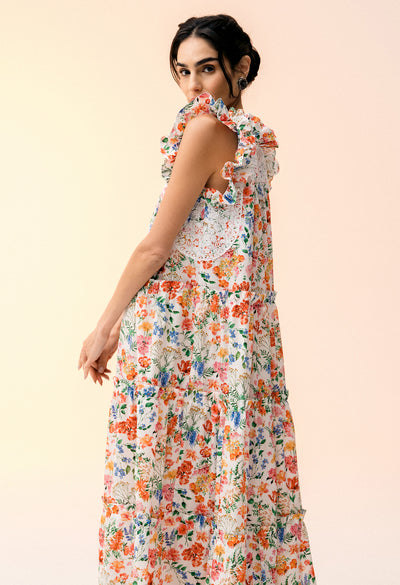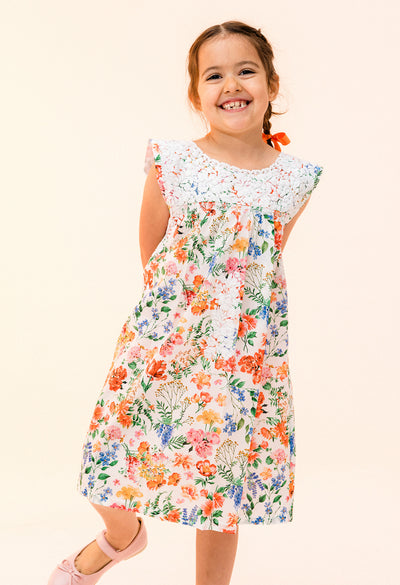DETAILS
The Falda Celebracion de Comunidades was hand embroidered by artisans in San Antonino Castillo Velasco, Aguascalientes and Aguacatenango. Each tier was embroidered by a different community to highlight the signature embroidery of their region. This piece is truly a celebration of collaborations. This skirt features an elastic waistband and tiers that contain traditional embroidery. The Juana skirt can be worn in so many ways and is the perfect addition for your wardrobe.
FIT GUIDE
ARTISAN COMMUNITY
First Tier
Aguacatenango is a small community that borders the famous ceramic-producing village of Ametenango del Valle in Chiapas. Aguacatenango is particularly known for its embroidered blouses, which are traditionally worn by the women in the village. The men in Aguacatenango are farmers and spend three-quarters of the year away from the villages to harvest maize. Corn therefore has significant symbolic meaning for the community as the livelihoods of the people depend on it. The women supplement family income while the men are away by embroidering blouses and selling them. The embroidery on the blouses made in Aguacatenango use traditional floral motifs that mirror the flora and fauna of Chiapas.
Second Tier
Aguascalientes, located in Southeastern Mexico, is best known for its beautiful cut-out lace. The lace accents the community’s exquisite clothing and tabletop pieces. There are over 100 artisans with whom we partner artisans to create these works of art.
The process begins with the artisan measuring where the lace will be cut out and drawing lines in the fabric. This is followed by the incredible process of cutting out the lace with a sharp razor or needle. Following the cutting of the lace, additional patterned details are traditionally sewn in, such as crosses (Jesusito), flowers (Filigrana) or diamonds (Diamantes).
Third Tier
Aguacatenango is a small community that borders the famous ceramic-producing village of Ametenango del Valle in Chiapas. Aguacatenango is particularly known for its embroidered blouses, which are traditionally worn by the women in the village. The men in Aguacatenango are farmers and spend three-quarters of the year away from the villages to harvest maize. Corn therefore has significant symbolic meaning for the community as the livelihoods of the people depend on it. The women supplement family income while the men are away by embroidering blouses and selling them. The embroidery on the blouses made in Aguacatenango use traditional floral motifs that mirror the flora and fauna of Chiapas.
Fourth Tier
The Flores pieces come from the community of San Antonino Castillo Velasco. It is a community in Oaxaca that is known for its traditional floral hand embroidery, which dates back over 200 years.
These blouses and dresses can take over one month to make, and specialty pieces can take up to six months to complete. As each garment is entirely handmade, these pieces are one-of-a-kind works of art.
The designs are made by first stamping the pattern onto the chosen fabrics with ink using a large iron stamp. From there, the artisans use a small hoop to stretch the fabric and embroider the designs using selected threads.
Once the embroidery is completed, the garments are sent to another community where they finish the smocking detail. The design that this community creates is known as “Hazme Si Puedes,” which literally means “Make Me If You Can.” This design showcases little people, known as “La Familia.”
A third community then completes these garments by adding hand crocheted detail to the neckline.
These designs are part of these artisan communities’ identities and heritage and are intended to last for generations.
CARE
Due to the intricate embroidery work, we recommend wash on delicate settings, hang to dry, and iron on low.





